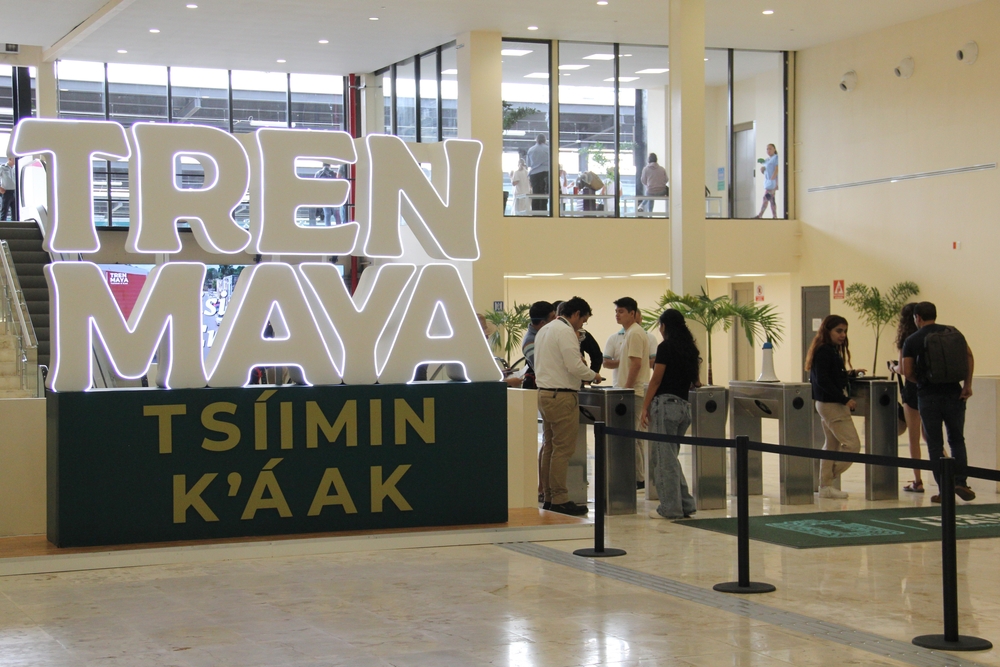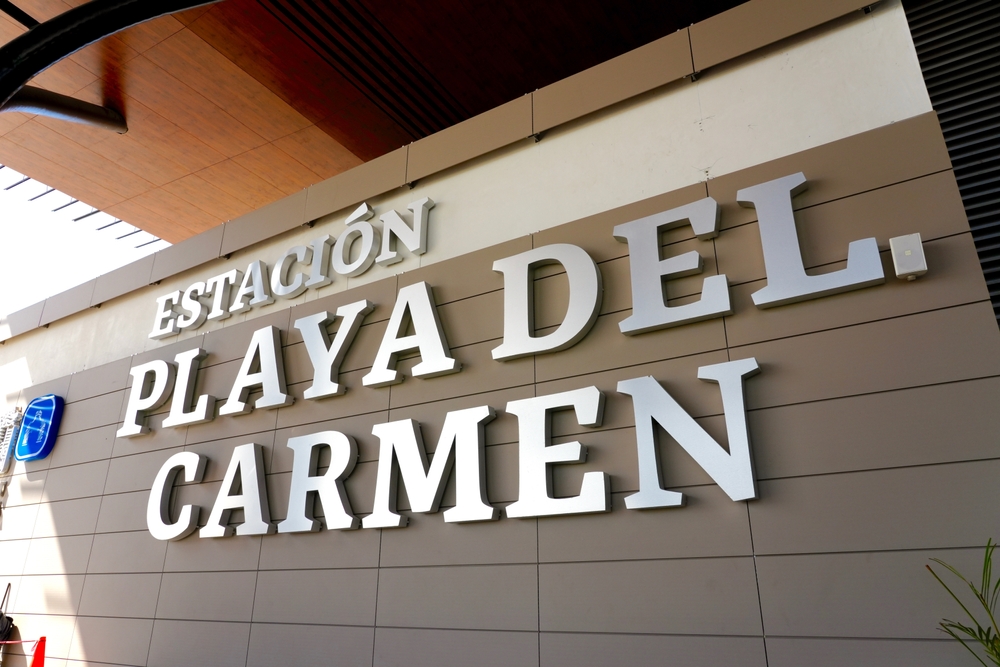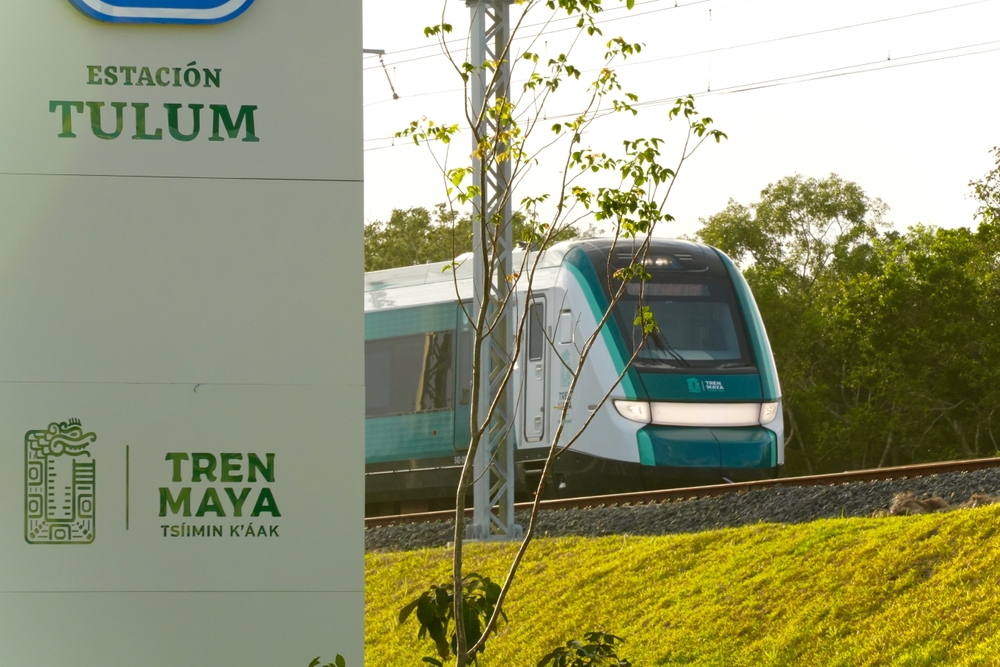The Tren Maya represents what may well be one of the most ambitious infrastructure projects in modern Mexican history. This railway system is transforming how travelers can travel through and experience southeastern Mexico, connecting ancient Maya ruins with Caribbean beaches through a network that spans nearly a thousand miles.
The Tren Maya covers 966 miles of railway tracks that loop through five southeastern Mexican states: Chiapas, Tabasco, Campeche, Yucatán, and Quintana Roo. The route begins in Palenque, Chiapas, and travels northeast toward Cancún, forming two interconnected routes that encircle the Yucatán Peninsula. The railway network is divided into seven sections and features 20 stations and 14 stops strategically positioned to connect major cities, tourist destinations, and archaeological sites. The inaugural section from Campeche to Cancún began operations on December 15, 2023, with the full route completed by December 2024.
Tren Maya passes through 40 municipalities and features infrastructure including eight maintenance bases, three workshops, and six garages to support its fleet of 42 modern trains. Some sections, particularly the 690-kilometer stretch from Mérida to Tulum, feature electrified double tracks, making this portion quieter and more environmentally friendly than conventional diesel-powered trains.

At its core, the project aims to redistribute tourist flows that have historically concentrated along the Caribbean coast, encouraging travelers to explore lesser-known inland destinations rich in Maya heritage. By connecting remote archaeological sites with established tourist hubs, the railway makes Mexico’s ancient cultural treasures more accessible to both international visitors and Mexican citizens. The train provides service to local passengers, tourists, and freight transportation, with trains capable of reaching maximum speeds of 160 kilometers per hour (99 miles per hour). This speed makes it a competitive alternative to lengthy bus journeys that previously dominated regional travel.
Mexico designed the railway system to also create employment opportunities in historically underserved regions, stimulate local economies through tourism, and support sustainable development practices. The project includes improvements to 27 archaeological zones, ten visitor service centers, and six specialized Maya Train hotels located near major archaeological sites.

Passengers can choose from three distinct train models: the Standard Mayan Train, the Mayan Train Restaurant, and the Mayan Train Long Distance. Each offers a different level of comfort and amenities tailored to various travel needs and preferences.
The Standard Train features three classes: Tourist, Premium, and Local, each with different pricing structures and amenities. The design takes inspiration from the jaguar, with modern interiors featuring spacious seating arrangements, large panoramic windows, and air conditioning that provides relief from the tropical heat. Tourist class offers comfortable seats arranged in rows, while Premium class provides additional space and services.
For culinary enthusiasts, the Restaurant Train—named Janal, meaning “to eat” in Maya—offers a unique dining experience inspired by modernist architect Luis Barragán. Passengers can savor traditional regional Maya cuisine while traveling through the route, turning the journey into a gastronomic adventure.

The Long Distance Train, called P’atal (meaning “to stay”), caters to travelers covering extensive routes. It features reclining seats and sleeping cabins with hotel-like amenities, creating a five-star experience on rails. The design emphasizes elegance with neutral and dark color schemes, providing comfort for overnight journeys across the peninsula. All trains include cafeterias, space for luggage and bicycles, and accessible facilities for passengers with disabilities. The cleaning crews pass through after nearly every stop to ensure a pleasant environment.
Passengers traverse landscapes that shift dramatically from dense jungle to Caribbean beaches, from colonial cities with colorful architecture to ancient ruins emerging from the forest canopy. The route provides access to over 65 archaeological sites, including world-renowned locations such as Chichén Itzá, Tulum, Palenque, and Calakmul. In addition, the train passes through 23 Pueblos Mágicos (Magical Towns)—charming communities recognized for their historical significance, cultural attractions, and natural beauty. Towns like Valladolid are a highlight, with colonial streets and hidden cenotes, while Bacalar hosts its Lake of Seven Colors. Izamal distinguishes itself with distinctive yellow buildings and ancient pyramids that coexist with colonial architecture.
The railway traverses protected areas including the Sian Ka’an Biosphere Reserve, the Calakmul Biosphere Reserve, and the Lacandon Jungle. Passengers might glimpse diverse wildlife, mangrove forests, rivers, and lagoons through panoramic windows. The famous cenotes—freshwater-filled sinkholes that dot the Yucatán landscape—offer opportunities for swimming and exploration at various stops.
Colonial cities like Mérida (the White City), Campeche with its fortified walls, and San Cristóbal de las Casas showcase the region’s rich architectural heritage and cultural fusion between Maya traditions and Spanish colonial influence.
Ticket prices range from $10 to $300 USD, depending on the station, distance traveled, and class selected. Different rates apply for Mexican nationals and foreign tourists, with additional discounts available for local residents from states along the route and individuals with disabilities.
Tickets are sold per station or stop, and passengers cannot reuse tickets if they disembark before their designated destination. Advanced booking is recommended, as tickets typically become available about one week before travel dates. The official website provides route information and booking capabilities, though travelers should verify current schedules as the system continues to mature.
Seven international airports serve the Tren Maya route, including major hubs in Cancún, Mérida, and Chetumal, facilitating connections for international visitors. At many stations, shuttle buses and other ground transportation options connect travelers to nearby attractions.


